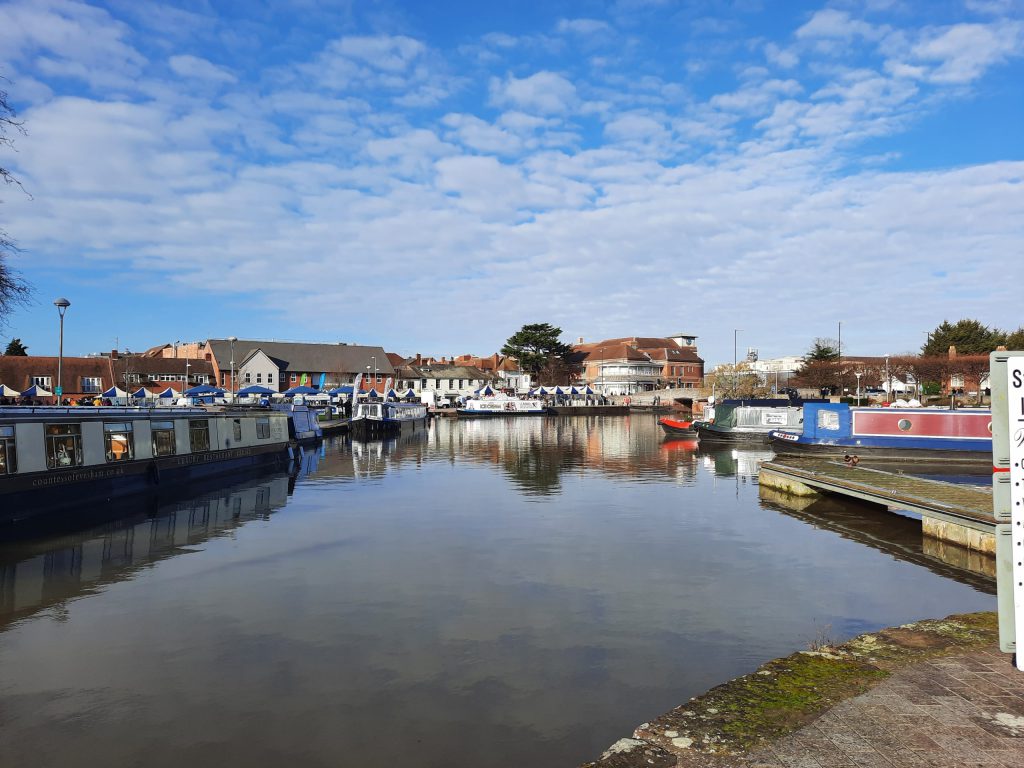If you’re used to associating the Warwickshire market town of Stratford upon Avon with William Shakespeare, you may find this view of Stratford rather unexpected. This is certainly not how Stratford upon Avon would have been in his time.
This view is looking across Bancroft Basin, towards Bridge St where the road bridge crosses the Stratford upon Avon Canal.
During the 19th Century this whole area would have been full of boats, warehouses and industrial activity. What you are looking at now is the canal basin which was completed in 1816. The canal was so busy that in 1826 a 2nd basin was built, but in 1902 this was filled in and is now the Bancroft Gardens.
The canal was built during a period of time often referred to as ‘canal mania’. The canals were the motorways of the 18th and early 19th Century and provided essential transport links which helped to fuel the industrial revolution. 18th Century roads were little more than mud tracks and during wet weather the waggons and stage coaches would get bogged down in mud but during hot dry weather they became even more treacherous with the deep hard ruts that formed in the mud.
Canals, artificial waterways to link up England’s major rivers, the Thames, Trent and Severn were regarded as the answer. Like many of the early canals this one was built to carry coal, specifically from Birmingham and the Black Country towards Evesham and Bristol, via the River Avon and the River Severn.
An Act of Parliament was passed in 1793 to allow building to start on the canal, but costs escalated and the initial money raised soon ran out. The first part of the Stratford Canal, which linked the canal system just south of Birmingham at King’s Norton with the Warwick and Birmingham Canal at Kingswood was completed by 1802. However, as each individual canal tended to be built by a separate set of investors there were the inevitable arguments. In particular over WATER.
As Birmingham is higher up than Stratford and boats can’t go up or downhill, in order for boats to travel between Birmingham and Stratford you needed to build locks. You can think of these as a bit like lifts or elevators for boats. The problem is that each time a lock is operated, water is lost from the canal system. So the original navigation at Kiingswood junction was a bit tortuous to say the least.
The canal only went as far as Kingswood junction until 1812, when William James became involved. He was interested in improving transport of all types and as he had owned shares in the canal since 1793 he pushed to continue the canal as far as Stratford, with the aim of creating a route between the River Severn and the Midlands.
Finally by 1816, the canal had reached Stratford and could then link with the River Avon, to transport goods (mainly coal) down river towards Evesham.
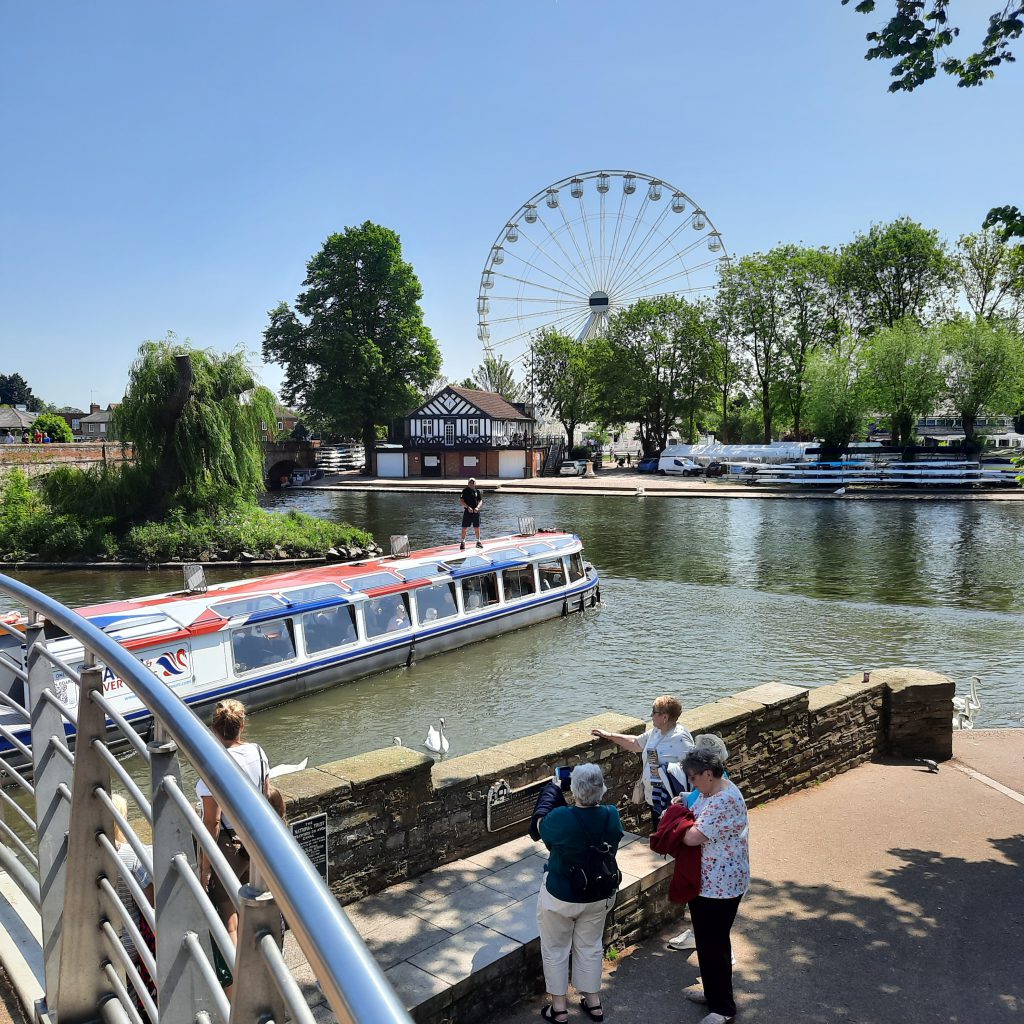
If you stand by the lock which joins the Stratford Canal with the River Avon, you would be able to see another bridge over the River Avon.
This red brick bridge is the tramway bridge. The tramway was the brainchild of William James and was part of his grand scheme to link the Midlands with London, where Stratford would become the main transport hub.
He envisaged goods being brought by canal to Stratford and then, either continuing through the lock to the River Avon, or being transferred to his tramway to go all the way to Oxford and then by River Barge down the Thames to London.
Whereas James Brindley is often referred to as the ‘Father of the Canals’, William James, an early proponent of railways as a means of transport is sometimes known as the ‘Father of the Railways’.
It is entirely probable that William James had seen a demonstration of Richard Trevithick’s steam locomotive in London and he had wanted his tramway to be drawn by steam engine. Unfortunately, the powers that be were nervous about having something with fire and steam under pressure, so the original Act of Parliament allowing the tramway to be built only allowed it to be horse-drawn, forbidding the use of a steam locomotive.
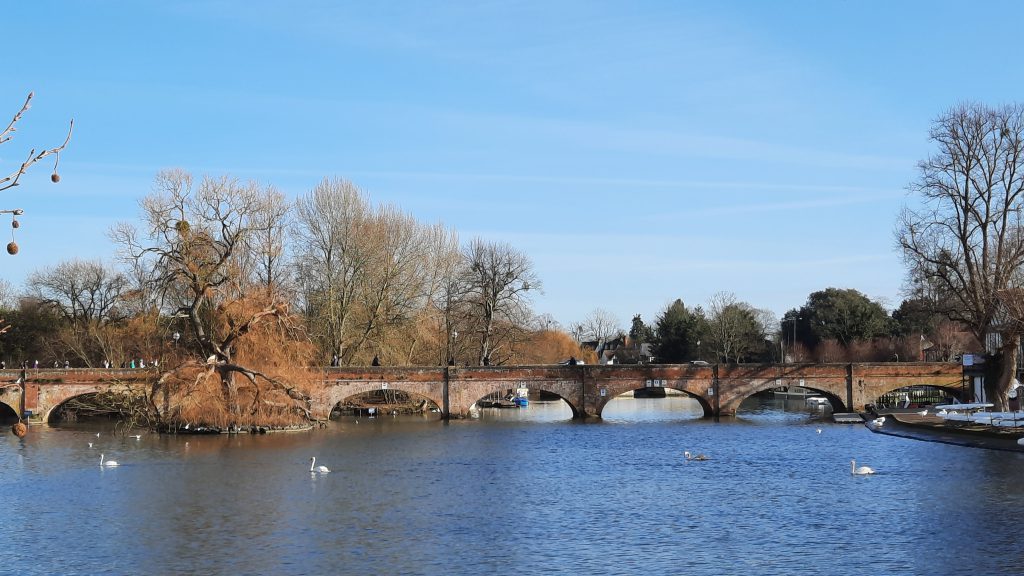
The entire scheme as imagined by James was never completed. The only parts of the route that were ever completed was the 16 mile route from Stratford to Moreton in Marsh and a branch line to Shipston on Stour.
Although by 1829 the tramway did make a profit, by then so may debts had been incurred that once the mainline railway reached Moreton in Marsh (and locomotives were steam rather than horse-drawn) in 1853, and then in 1859 a railway branch from Stratford to Honeybourne was built which took most of the through traffic, there was little hope of it ever being a profitable route.
In 1926 an Act of Parliament formalised the abandonment of the whole route and today the tramway bridge and the line of the railway is used as a cycleway and footpath towards Long Marston.
However, there is one of the old horse drawn waggons which were used on the tramway on display on a short piece of the track. You can see this just near the canal basin. This waggon was used to take goods to and from the Newbold Lime Works at Newbold on Stour about 7 miles to the south east of Stratford.
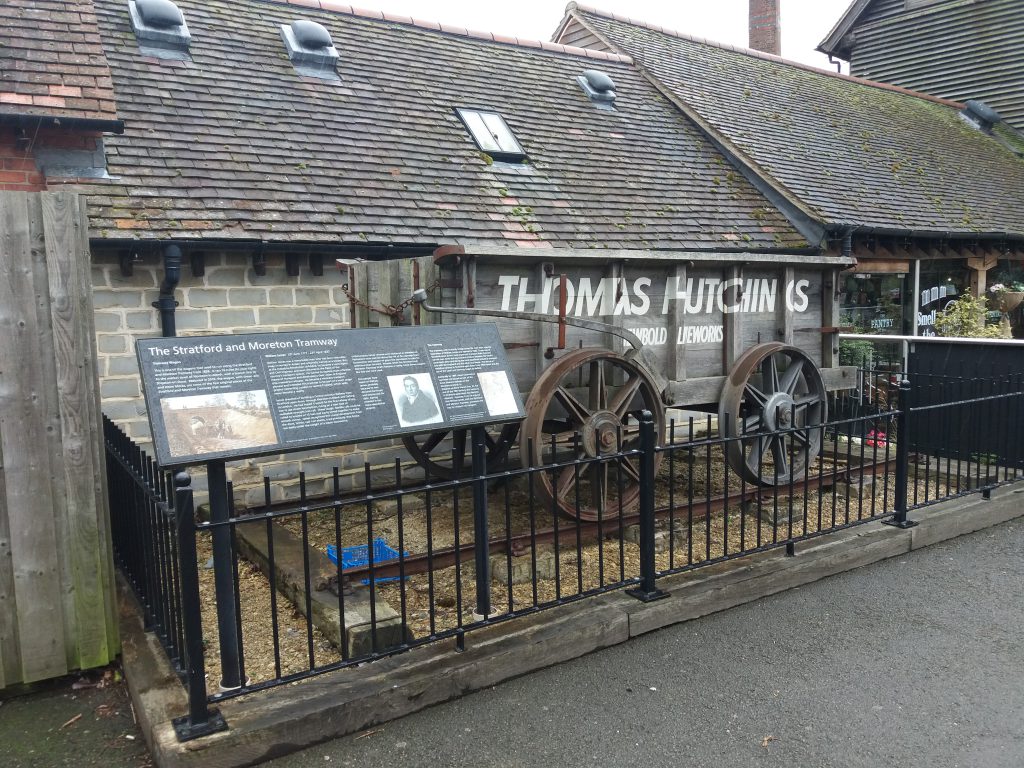
As we go beyond the tramway bridge, we go even further back in time to a grey stone bridge. This bridge is where in Saxon times there was a ford over the River Avon. And it was this ford which gives Stratford its name from the Old English ‘Straetford’ meaning a ford on a Roman Road.
The stone bridge was built in the late 15th Century replacing a timber bridge which had been repaired and replaced many times. Being the only permanent crossing over the river in Stratford it was always a very important route in and out of the town. The bridge remains the only permanent road bridge crossing the river in the town, so can become a bit of a bottleneck for traffic today.
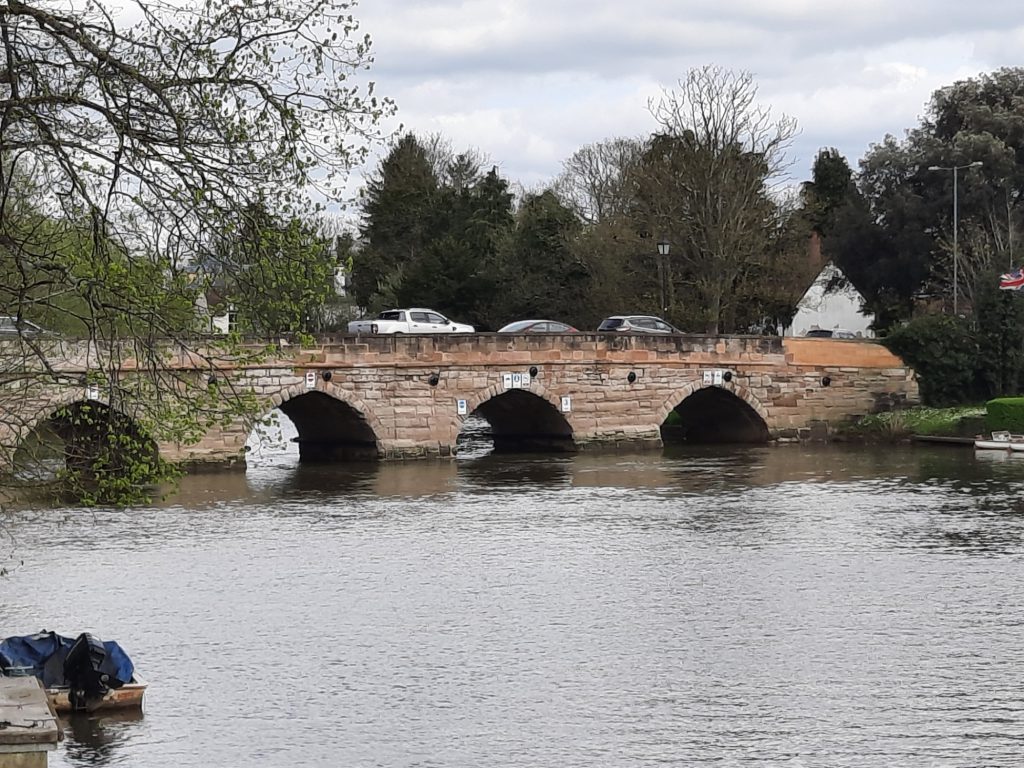
The bridge is named the Clopton Bridge as money to build it was given by Hugh Clopton, the younger son of a local family who as a younger son, left Stratford to make his fortune. Make his fortune he did, and when he returned to live in Stratford he funded many improvements for his home town, including paying for this bridge.
In the 18th Century the road was a turnpike route in and out of Stratford and the ten-sided toll house built in 1814 is still standing on the town side of the river. This building has been restored and converted into office space.
Although there have been some changes to the original bridge, considering how long it has been here there are remarkably few and the main basic structure with 14 pointed arches spanning the river remains the same. The most notable improvement is an iron walkway added to the north side of the bridge in 1827 to allow pedestrians safe passage across the river.
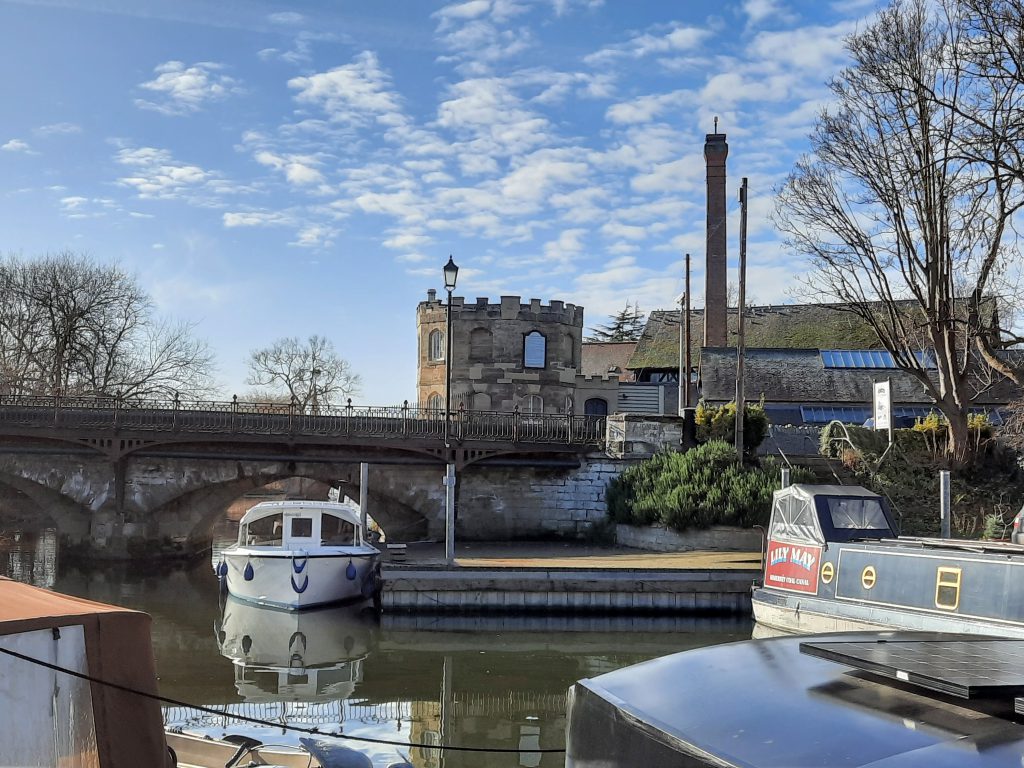
Beyond the Toll House you can still see the remnants of some of the industrial buildings that would have been all round the canal basin and by the river. You can see Cox’s Yard building, a weatherboarded former warehouse and a tall chimney behind it. These are all that have survived of an extensive timber yard and is now the Attic Theatre with an outdoor café and bar area by the canal marina.
To the left the brick building is Tramway House, the former toll house for the tramway.



